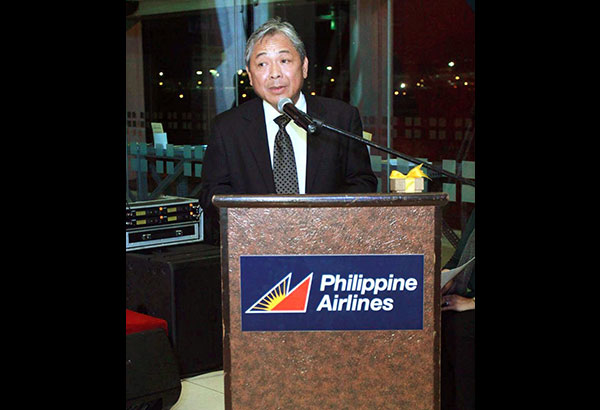Asia Pacific to drive global aviation growth in next 20 years

Despite economic turbulence in many parts of the world, the outlook for the global aviation industry remains positive. Airbus executives see the Asia Pacific region as a strong engine for growth, saying the demand for new aircraft in the next two decades could soar to about 35,000 with the value estimated at $5.3 trillion. American aircraft manufacturer Boeing has an even higher forecast, placing the number of deliveries up to 2036 at over 41,000 jetliners valued at more than $6 trillion.
More and more Asian carriers are modernizing their fleet, among them Thai Airways which has drawn up plans to purchase about 30 new generation planes to replace its aging fleet. The modernization is part of the carrier’s efforts to recoup losses in the three years out of the last four, and sustain the profits it finally posted in 2016. Analysts agree the Thai airline can boost its competitiveness by purchasing more airplanes to modernize its current fleet of 100 aircraft.
According to Airbus, first time flyers with a lot of disposable income will drive the anticipated huge demand in the travel industry which has been described as “remarkably resilient to external shocks,” with expanding tourist destinations and new airline routes as key growth factors.
In the Philippines, flag carrier Philippine Airlines achieved a milestone last Thursday with the historic maiden flight for the Bohol-South Korea route, with a PAL Airbus 320 taking off from the Tagbilaran City Airport and arriving at Incheon International Airport in Seoul after four hours and 39 minutes of flight time. The opening of the route has energized the tourism industry in Bohol which suffered a temporary setback after ISIS-linked terrorists invaded a barangay last April. The inaugural flight is proof that Bohol is back to normal and that it’s business as usual, said local government officials.
As noted by PAL president Jimmy Bautista, “making Tagbilaran a new international gateway provides foreigners with the fastest link to the attractions of Bohol and nearby Visayas cities,” adding that linking international points to sought-after places in the Visayas through convenient connections is the flag carrier’s way of catering to the travel needs of its patrons. Aside from opening the Bohol-South Korea route, PAL also resumed flights to Kuala Lumpur recently after three years via a code-sharing arrangement with Malaysia Airlines.
The fact is, loyal PAL passengers are confident that Asia’s oldest airline is set to achieve its vision to become a five-star carrier by 2020 as seen in its moves to expand routes, enhance service and beef up its fleet with new generation aircraft. One passenger also wrote to us saying that during a recent flight from Los Angeles to the Ninoy Aquino International Airport, her flight arrived one and a half hour early from the estimated arrival time – leaving her relatives frantically weaving through the traffic to get to the airport in time to fetch her.
Just recently, PAL firmed up its purchase of seven Bombardier Q400 aircraft, with delivery expected for completion by November this year. PAL, which is set to take delivery of two new Boeing 777s this December, also placed an order for six Airbus A350s with an option for six more. It has been a very busy 2017 for the airline, and its efforts to enhance service to its passengers have been duly noted during the prestigious Skytrax World Airline Awards that named it among the 10 Most Improved Airlines. The London-based Skytrax is a prestigious air transport rating organization, and its awards are considered the Oscars of the airline industry.
PAL also saw its ranking in the World’s Top 100 airlines jump 16 notches higher from No. 83 in 2016 to No. 67 this year. This is not really surprising considering that PAL has been working non-stop to provide optimum service to “please its passengers.”
PAL has started refurbishing eight of its Airbus A330-300s, with business class seats having more legroom and installed with the Pneumatic Comfort System or PCS which allows passengers to adjust the firmness of seats according to their preferred comfort levels. Incidentally, PAL is the first Asian carrier to offer the Pneumatic Comfort System.
BSP reforms to continue under new leadership
Saying he has “very big shoes” to fill following the retirement of Amando “Say” Tetangco, incoming Bangko Sentral ng Pilipinas (BSP) Governor Nestor Espenilla also gave his assurance that the reforms initiated by his predecessor would continue.
Noting the “legacy of excellence” that Tetangco is leaving behind, and how the BSP has been instrumental in transforming the Philippines from being Asia’s economic laggard to one of the best performing economies in the region today, Espenilla said he would continue the pursuit of capital market reforms to provide viable alternative sources of financing for long-term investments.
Business people admit that transacting in foreign currencies has been easier under Tetangco’s watch, saying they appreciate his initiatives which have benefitted many. For instance, the higher over-the-counter dollar purchase at $500,000 for individuals and $1 million for corporations, and the increase of the amount of money that can be brought in or out of the country to P50,000 from the previous limit of P10,000 which many had criticized as impractical and unrealistic.
***
Email: [email protected]
- Latest
- Trending






























